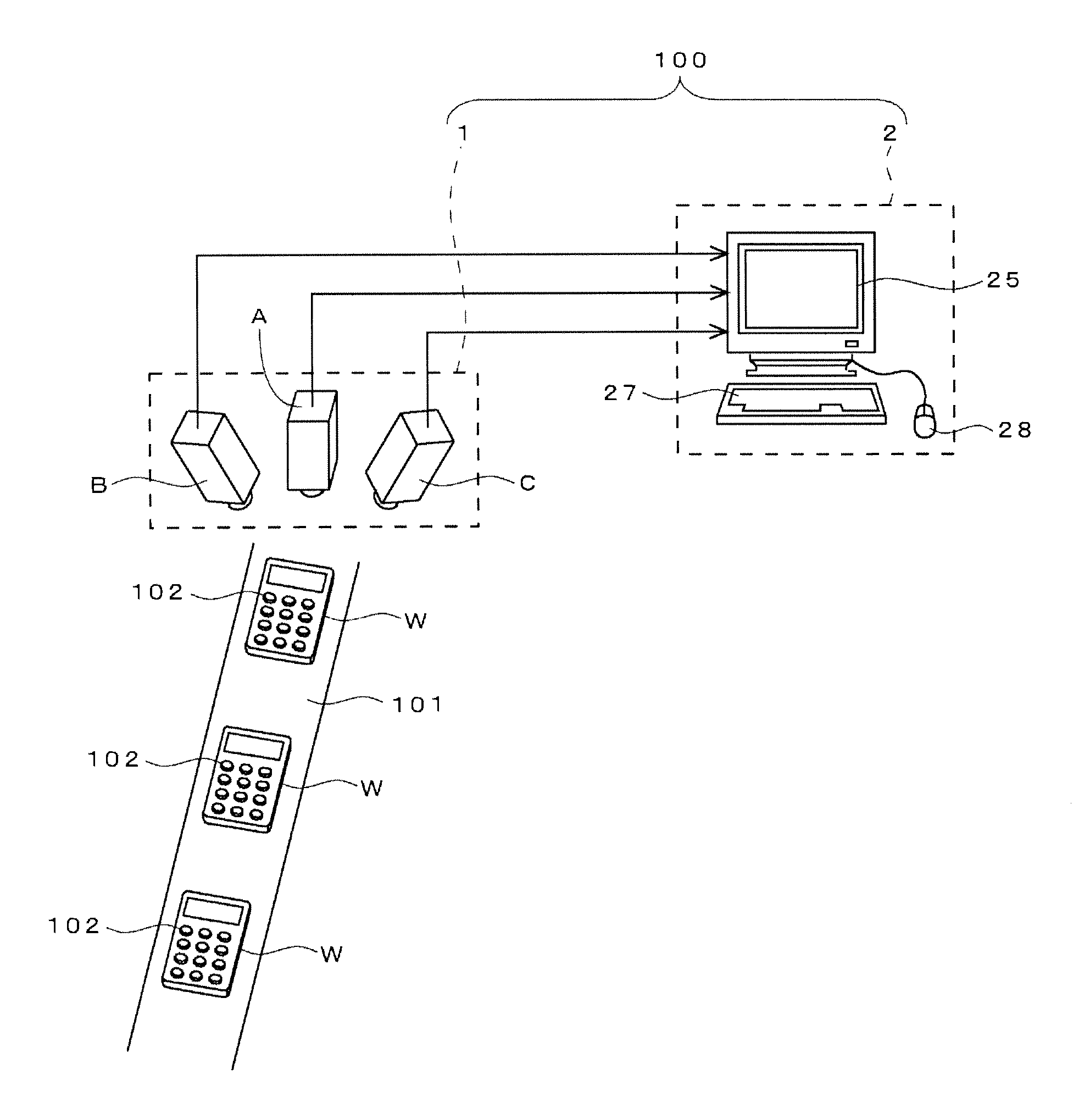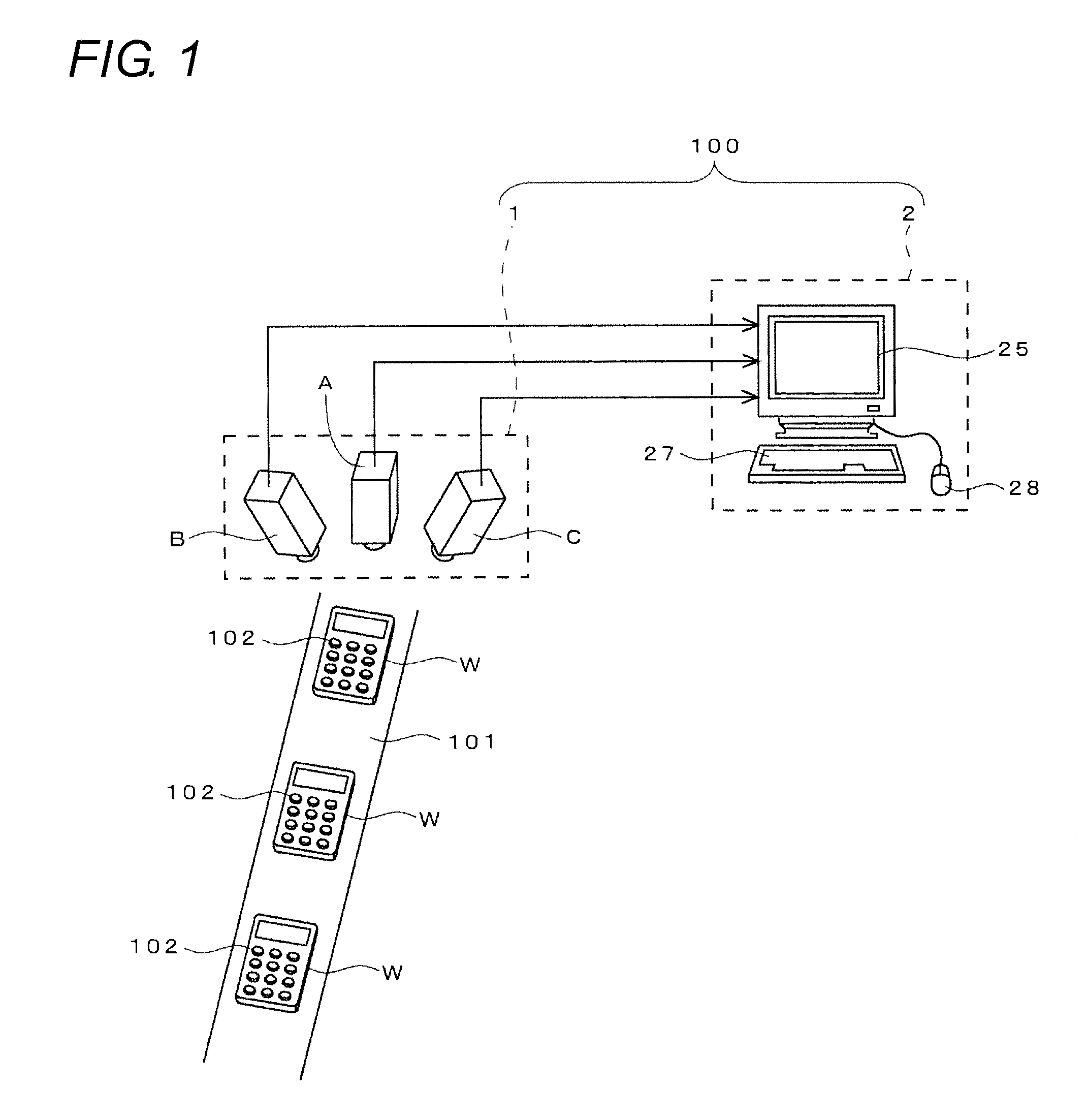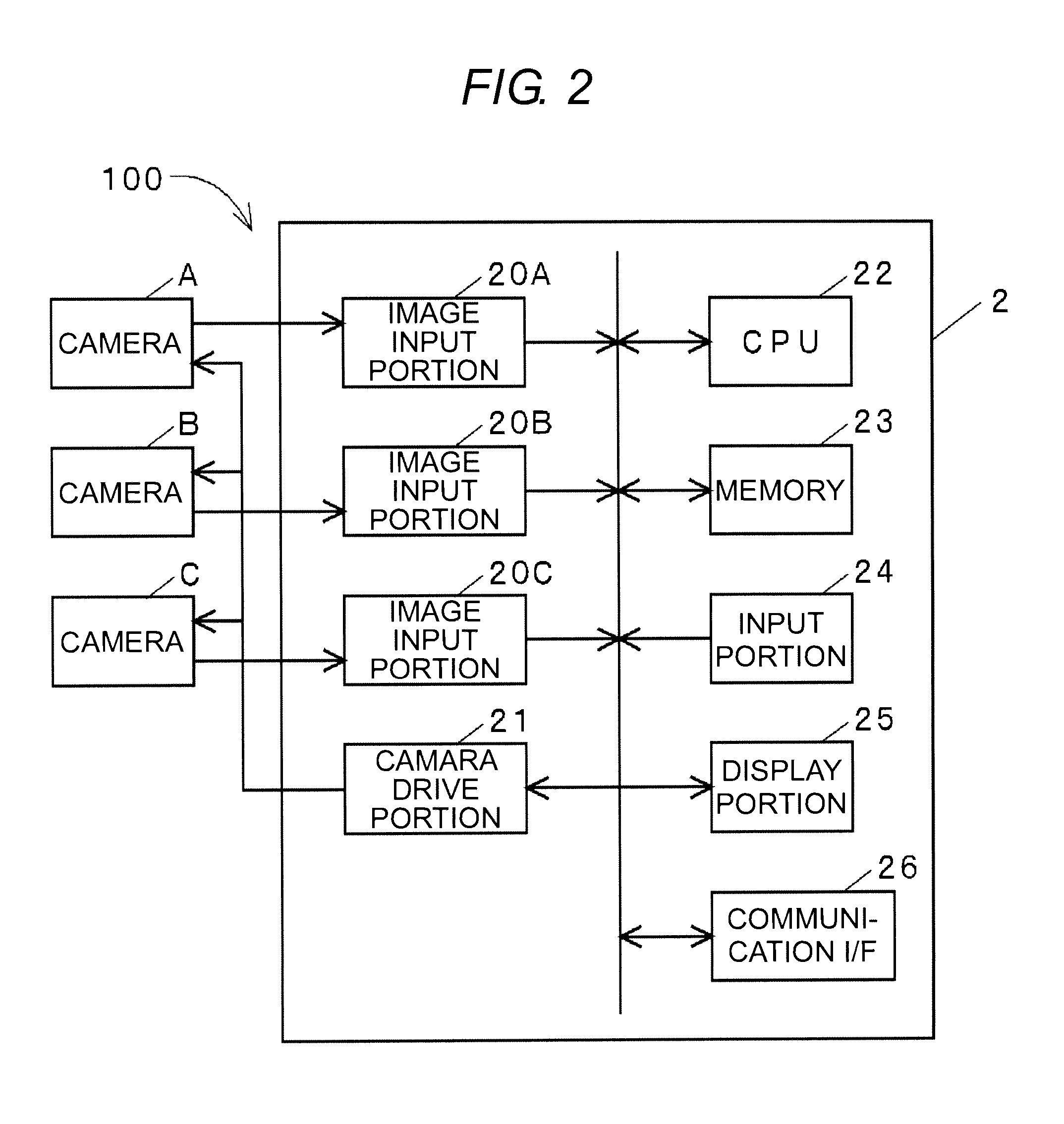Three-dimensional vision sensor
a three-dimensional vision and sensor technology, applied in the field can solve the problems of preventing the efficient creation of three-dimensional models and the output of recognition noise, and achieve the effect of improving the convenience of three-dimensional vision sensors and excellent accuracy
- Summary
- Abstract
- Description
- Claims
- Application Information
AI Technical Summary
Benefits of technology
Problems solved by technology
Method used
Image
Examples
first embodiment
[0045]FIG. 1 illustrates an embodiment of an inspection line which employs a three-dimensional vision sensor.
[0046]This inspection line is for performing, on works W (remote control apparatuses, specifically) having the same shape which have been produced in a factory, inspections as to whether or not heights of push buttons 102 provided on upper surfaces of their cabinets are proper.
[0047]A three-dimensional vision sensor 100 in the present embodiment is configured by a stereo camera 1 provided above a transfer line 101 for works W, and a recognition processing apparatus 2 provided near the transfer line 101. The stereo camera 1 is configured by three cameras A, B and C which are laterally arranged. The center camera A, among them, is placed at a state where its optical axis is oriented in a vertical direction (that is, when viewed at its front surface), while the left and right cameras B and C are placed such that their optical axes are oblique.
[0048]The recognition processing app...
PUM
 Login to View More
Login to View More Abstract
Description
Claims
Application Information
 Login to View More
Login to View More - R&D
- Intellectual Property
- Life Sciences
- Materials
- Tech Scout
- Unparalleled Data Quality
- Higher Quality Content
- 60% Fewer Hallucinations
Browse by: Latest US Patents, China's latest patents, Technical Efficacy Thesaurus, Application Domain, Technology Topic, Popular Technical Reports.
© 2025 PatSnap. All rights reserved.Legal|Privacy policy|Modern Slavery Act Transparency Statement|Sitemap|About US| Contact US: help@patsnap.com



